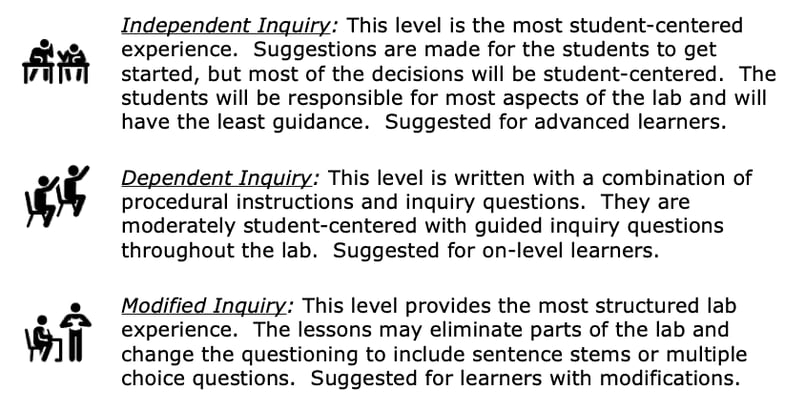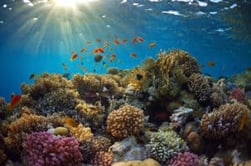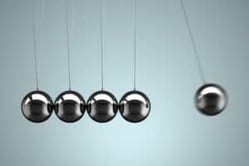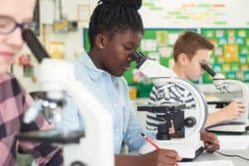Water Pollution Inquiry Lab
Middle School Inquiry Lab on Water Pollution
In this lab students will design a method to monitor and minimize water pollution.
Each inquiry lab will contain an essential question that will drive the lesson and make students think. For this lesson, the essential question is:
- How can we minimize and monitor the amount of pollution in water?
BACKGROUND INFORMATION AND MATERIALS LIST:
Students will begin the lab by reading the essential question and background information. This can be done individually, as lab groups, or as a whole class. If you consider lab groups, you also might include some type of whole class formative checks before digging into the lab.

Materials List:
- rectangular pan
- 3 clear plastic bowls
- graduated cylinder
- plastic spoon
- glitter
- milk
- cut-up plastic pieces (small Ziploc per group)
- blue food coloring
- paper towels
- cooking oil
- cotton balls
- sponges
- water
- tweezer
- flashlight
- coffee filter
PROCEDURE:
For this lab, students get a taste of what it is like to clean up after an oil spill, on a much smaller scale of course. There are three clean up scenarios and a final scenario where students will design a device that will help to monitor a local water source.
For the first three scenarios, working tools for the different situations, students will try to remove as many pollutants (oil, glitter, milk, plastic) from the water as possible. For the oil scenario, students dump oil into a bowl of water and will utilize tools like droppers and cotton balls to remove as much oil as they can from their water and record their cleanup and containment effort. Next, students drop glitter and plastic into a different bowl of water and using just tweezers and a spoon, students will again try to remove the pollution from this bowl of water too.
When students are working with the milk, they are looking at how viscous liquids affect the amount of light that passes through. Students are asked to think about how the viscosity of the water could affect plants and animal life. Finally, at the end of the scenarios, students will take all bowls and pour them over a coffee filter. Students will observe how many more pollutants the filter was able to remove.
The last portion of the lab gets the students brainstorming as they are tasked with coming up with a sketch design of a piece of technology that will aide in the effort of keeping the local pond clean. Students will define the problem for which their device would be used for and also explain how it works.
CHECK FOR UNDERSTANDING:
At this point in the lab, students will be checked for understanding by answering questions about their findings. Here are a few that come with the lab:
- Using different methods to contain, disperse, and remove oil from the gulf, it took about four years before owners declared that the cleanup was mostly complete. Why do you think this process took so long?
- How does less light passing through a body of water affect plants that live in the water? Explain.
- How does less visibility in the water affect animals that live and hunt for food in the water? Explain.
- How does your device monitor for pollution and minimize the impact of human activities like fertilizing grass?
CONCLUSION
Students will go back to the essential question and write a CER (Claim, Evidence, Reasoning) to conclude the lab. Once completed, students will reflect back on their learning by answering the following questions:
- What is an effect that could result from oil rigs leaking into an ocean?
- What would happen to living organisms in a pond if the oxygen was depleted due to chemicals flowing into the water?
MODIFIED AND INDEPENDENT INQUIRY VERSIONS
All of the Kesler Science inquiry labs come with three different modification levels. Each lab is differentiated using the icons below.
STANDARDS ALIGNMENT
NGSS: ESS3-3 – Apply scientific principles to design a method for monitoring and minimizing a human impact on the environment.

Download Over $100 in FREE Resources
For Middle School Science
Simply create a login below and gain immediate access to a selection of our Kesler Science product line worth $100 - for FREE. There's a full version of every product type! You'll also join tens of thousands of middle school science teachers who receive timely tips and strategies straight to their inbox.





